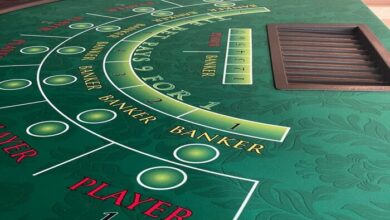The Science Behind Sit-Stand Desks: Why Movement Matters at Work

Did you know that prolonged sitting has become one of the biggest health challenges facing office workers in today’s digital-driven workplace? With studies linking sedentary behavior to a variety of physical and mental health issues, it’s no wonder a sit stand desk has gained popularity. This desk allows workers to alternate between sitting and standing throughout the day, encouraging movement and breaking up long periods of inactivity.
But why does this matter so much? Let’s take a closer look at the science behind sit-stand desks and why movement is crucial at work.
The Risks of Prolonged Sitting
Sitting for extended periods has been dubbed “the new smoking” for a reason. Research has linked excessive sitting with increased risks of heart disease, obesity, type 2 diabetes, certain cancers, and premature death. According to a study in the Annals of Internal Medicine, even those who exercise regularly are still at risk if they spend most of their day seated.
On a more immediate level, sitting for hours can lead to musculoskeletal issues, such as back pain, poor posture, and neck strain. It also slows metabolism and reduces circulation, often resulting in fatigue, brain fog, and lower productivity.
How Sit-Stand Desks Help
Sit-stand desks aim to combat these issues by encouraging workers to switch positions frequently. The idea isn’t to stand all day. Rather, it’s to move more throughout the day. Research supports that alternating between sitting and standing can lead to a host of physical and mental health benefits.
According to a 12-month study published in the British Journal of Sports Medicine, employees who used sit-stand desks reported less fatigue, fewer musculoskeletal issues, and improved focus. Another study from the University of Waterloo found that standing for even 30 minutes each hour helps improve spinal alignment and reduce lower back pain.
Key Benefits of Sit-Stand Desks
Reduced discomfort: Alternating positions relieves pressure on the lower back and neck, reducing strain and pain.
Improved posture: Standing promotes a more natural spine alignment, helping to negate the slouching that often happens while sitting.
Better circulation: Standing increases blood flow and oxygen to muscles and the brain, improving alertness.
Better metabolism: Standing burns more calories than sitting and can help regulate blood sugar levels, especially after meals.
The Role of Movement in Cognitive Performance
Physical movement doesn’t just benefit your body; it can sharpen your mind. Light activity increases oxygen and nutrient flow to the brain, which enhances cognitive function, memory, and creativity. Alternating postures throughout the day helps reduce mental burnout and improves decision-making and focus.
Additionally, regular movement can help regulate blood sugar and insulin levels, especially after meals. Standing or walking for even 5-10 minutes after eating can significantly reduce post-lunch energy crashes, leading to more consistent productivity.
Creating a Culture of Movement
While sit-stand desks are a great starting point, a holistic movement-friendly office environment goes even further. Here are a few additional strategies to get people moving:
Walking meetings: Replace traditional sit-down meetings with short walking sessions.
Movement reminders: Apps or smartwatches can remind employees to stand up, stretch, or walk every hour.
Active workstations: Incorporate balance boards, treadmill desks, or under-desk cycles for those who want to add more movement.
Encourage microbreaks: Short breaks to stretch or move around can reduce fatigue and eye strain while boosting overall well-being.
In summary, the modern workplace may be increasingly digital, but our bodies are still wired for motion. Sit-stand desks offer a science-supported way to improve health, boost focus, and keep energy levels high throughout the day. By embracing regular movement and breaking the cycle of sedentary habits, we can create work environments that are not only more productive, but healthier and more enjoyable.




